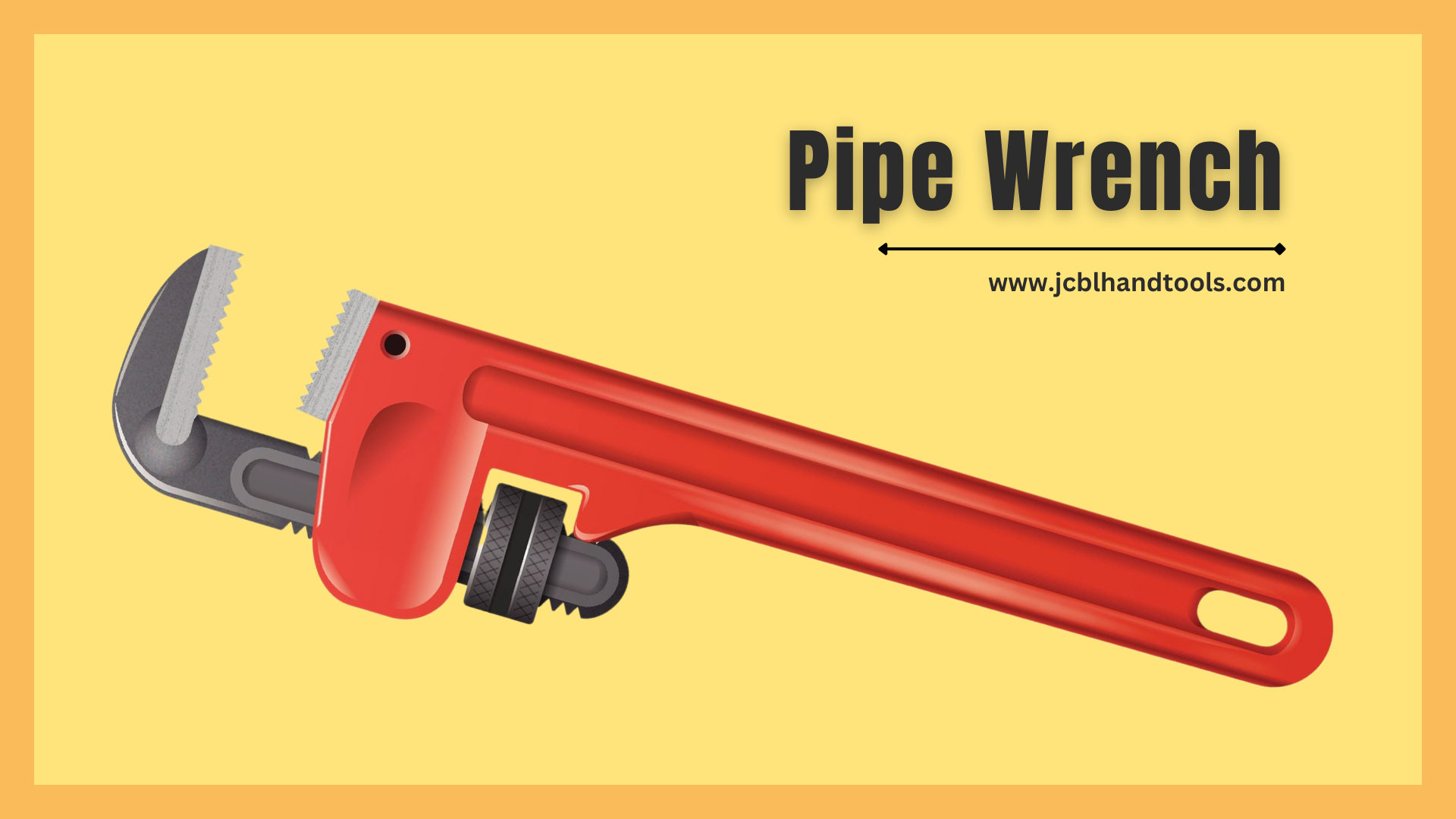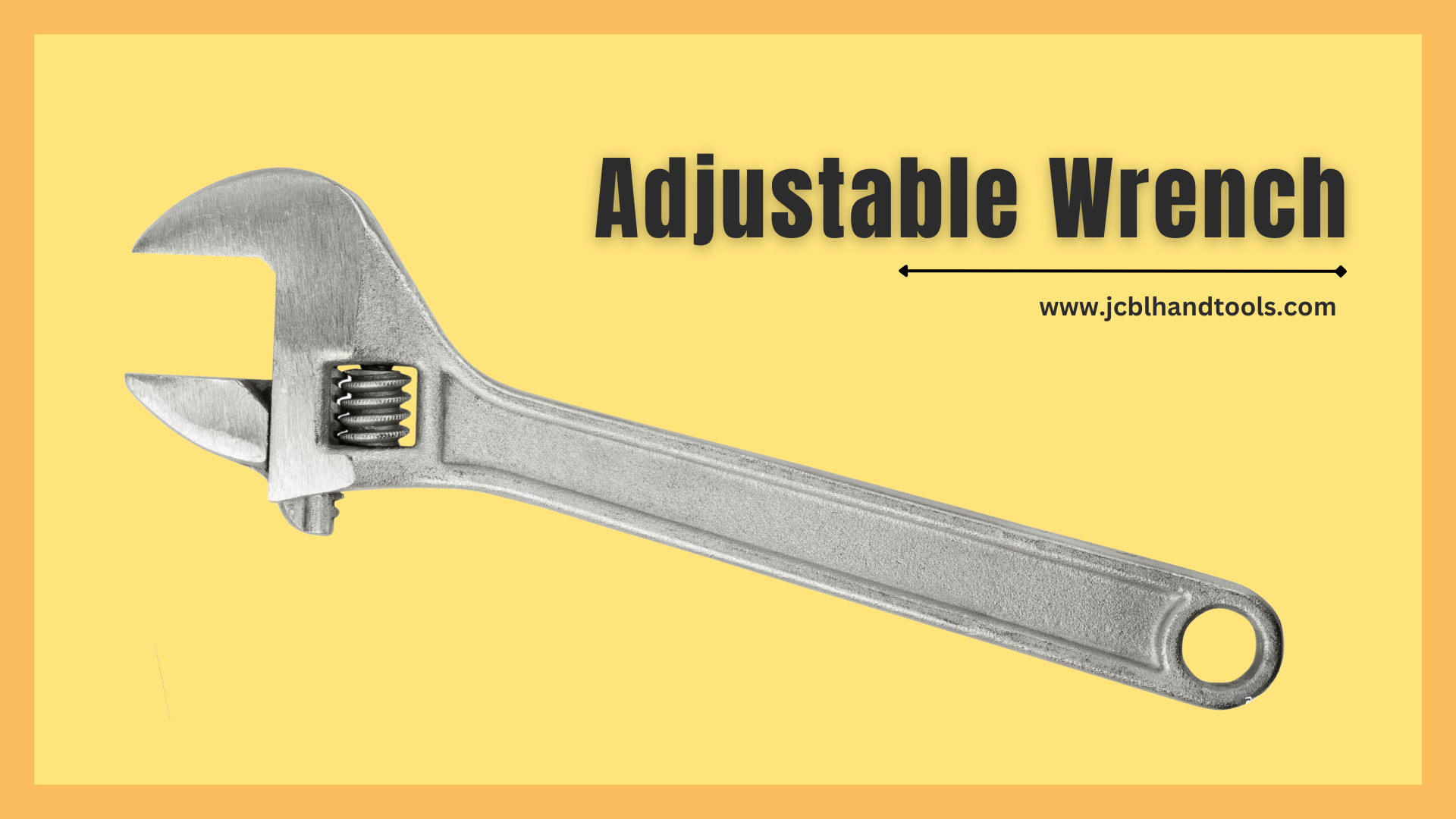When it comes to plumbing and mechanical work, having the right tools can make all the difference. Among the wrench options available, two commonly debated tools are the pipe wrench and the adjustable wrench. Both serve as indispensable assets in any toolbox, yet their designs and applications set them apart in distinct ways. Understanding the differences between these two wrenches is crucial for selecting the most suitable tool for the job at hand.
In this blog, we’ll explore the key differences, features, and uses between these two wrenches to help you choose the right tool for specific needs.
What is a Pipe Wrench?
The pipe wrench is a heavy-duty tool designed specifically for gripping and turning pipes and fittings. It features serrated teeth jaws that strongly grip round surfaces, such as pipes and cylindrical fittings. The jaws are typically made from hardened steel to withstand the high torque required for loosening or tightening stubborn connections.

Features of a Pipe Wrench
- Fixed Jaw: The lower jaw of a pipe wrench is fixed, providing a stable point of contact against the pipe.
- Adjustable Handle: The handle of a pipe wrench is usually adjustable, allowing the user to extend or shorten it for better leverage.
- Teeth: The jaws’ serrated teeth provide a firm grip on the surface, reducing the possibility of slippage.
- Heavy-duty Construction: Pipe wrenches are built to withstand heavy use and are suitable for working with metal pipes and fittings.
How to Use a Pipe Wrench?
Here’s a step-by-step guide on how to use a pipe wrench:
- Choose the Right Size: Select a pipe wrench that matches the pipe size or fitting you’re working with. The wrench should have jaws large enough to fit around the pipe comfortably.
- Position the Wrench: Place the pipe wrench onto the pipe or fitting with the fixed jaw (lower jaw) underneath and the adjustable jaw (upper jaw) on top. Ensure that the jaws are aligned parallel to the pipe to maximize grip.
- Adjust the Wrench: If needed, adjust the position of the adjustable jaw to fit snugly around the pipe. Use the thumbwheel or similar mechanism to tighten the jaws securely against the pipe. Avoid over-tightening, as this can damage the pipe or fittings.
- Apply Pressure: Once the wrench is securely in place, apply pressure in the direction you want to turn the pipe or fitting. Use the handle of the wrench to provide leverage, applying force gradually to avoid sudden movements that could cause slippage.
- Turn the Pipe: With a firm grip on the wrench, turn the pipe or fitting in the desired direction. Use smooth, steady movements to loosen or tighten the connection. If the connection is particularly stubborn, you may need to use additional force, but be cautious not to exert excessive pressure.
- Release the Wrench: After completing the task, release the pressure on the wrench and remove it from the pipe or fitting. Loosen the adjustable jaw to release the grip, and store the wrench in a safe place.
- Inspect for Damage: Before and after use, inspect the pipe wrench for any signs of damage, such as worn teeth or bent handles. Replace any damaged wrenches to ensure safe and effective operation.
What is an Adjustable Wrench?
The adjustable wrench, also known as a crescent wrench or adjustable spanner, is a versatile tool that can be adjusted to fit various sizes of nuts, bolts, and fittings. Unlike the pipe wrench, which is designed specifically for pipes, the adjustable wrench can be used in a wide range of shapes and sizes, including square and hexagonal fasteners.

Features of an Adjustable Wrench
- Adjustable Jaw: The jaw of an adjustable wrench can be opened or closed using a screw mechanism, allowing it to fit different sizes of fasteners.
- Smooth Jaws: Unlike pipe wrenches, adjustable wrenches typically have smooth jaws, which are less likely to damage softer materials.
- Compact Design: Adjustable wrenches are generally more compact and lightweight compared to pipe wrenches, making them easier to carry and maneuver.
- Versatility: Can be used on various shapes and sizes of fasteners, not limited to pipes.
How to Use an Adjustable Wrench?
Here’s a step-by-step guide on how to use an adjustable wrench effectively:
- Select the Right Size: Choose an adjustable wrench that matches the size of the nut, bolt, or fitting you need to work with. Ensure that the jaws can securely grip the fastener without slipping.
- Adjust the Wrench: Use the adjusting screw or knob located near the jaws to adjust the opening width of the wrench to fit the size of the fastener. Turn the adjusting mechanism clockwise to widen the jaws or counterclockwise to narrow them until they snugly fit around the fastener.
- Position the Wrench: Place the jaws of the adjustable wrench around the nut, bolt, or fitting, ensuring that they make full contact with the sides of the fastener. Position the wrench so that the force applied will turn the fastener in the desired direction.
- Apply Pressure: Hold the handle of the wrench firmly and apply pressure in the direction you want to turn the fastener. Use the length of the wrench handle to provide leverage, applying force gradually to avoid slipping or rounding off the edges of the fastener.
- Turn the Fastener: With a firm grip on the wrench, turn the handle in the desired direction to loosen or tighten the fastener. Use smooth, steady movements, adjusting the position of the wrench as needed to maintain a secure grip on the fastener.
- Release the Wrench: After completing the task, release the pressure on the wrench and remove it from the fastener. If necessary, readjust the opening width of the wrench for the next task by turning the adjusting screw or knob.
- Inspect for Damage: Before and after use, inspect the adjustable wrench for any signs of wear or damage, such as worn jaws or loose adjusting mechanisms. Replace any damaged wrenches to ensure safe and effective operation.
Key Difference in Jaw Design
Pipe Wrench
- Serrated teeth jaws are designed for gripping round surfaces like pipes and cylindrical fittings.
- The lower jaw is fixed, providing stability against the pipe, while the upper jaw can be adjusted.
- Ideal for plumbing and mechanical work due to its specialized grip on pipes.
Adjustable Wrench
- Smooth jaws that can be adjusted to fit different sizes of nuts, bolts, and fittings.
- Jaw size is adjusted using a screw mechanism for versatility in gripping various shapes and sizes.
- Suitable for a wide range of applications beyond plumbing, including automotive repair and general maintenance tasks.
Choosing the Right Tool
When deciding between a pipe wrench and an adjustable wrench, consider the nature of the job at hand. If you’re working primarily with pipes and fittings, especially in heavy-duty applications, a pipe wrench would be the preferred choice due to its superior grip and strength. On the other hand, if you need a versatile tool that can handle various types of fasteners, including nuts and bolts, an adjustable wrench would be more suitable.
Keep in mind that the quality of the wrench matters. Opting for trusted brands like JCBL Hand Tools ensures reliability and durability, which are essential for long-term use in demanding environments.
Also Read: Different Types Of Spanners and Their Uses
Conclusion
Both the pipe wrench and the adjustable wrench are valuable tools in any toolkit, each with its own set of advantages and applications. By understanding the differences between these two wrenches, you can make an informed decision and ensure that you have the right tool for the job at hand. Whether you’re tightening pipes or fastening bolts, having the appropriate wrench will help you get the job done efficiently and effectively.



